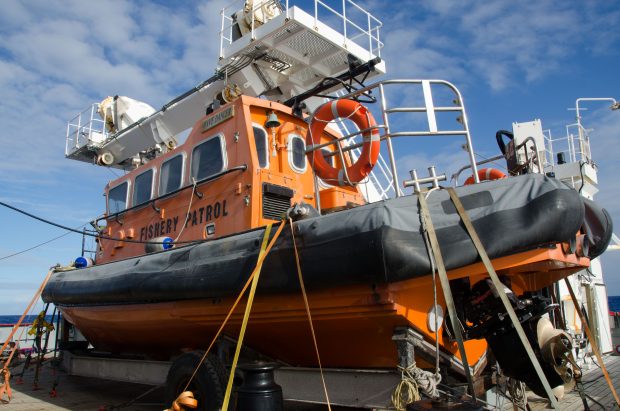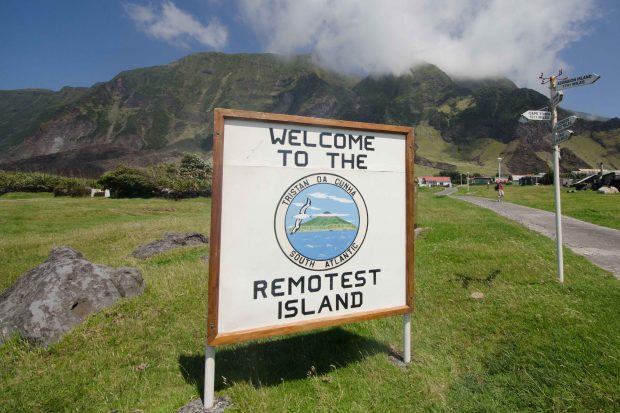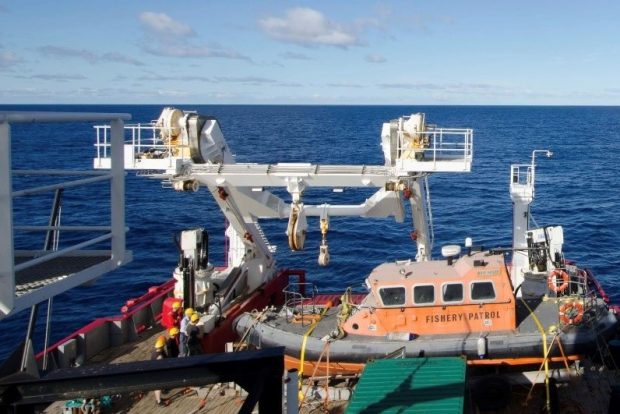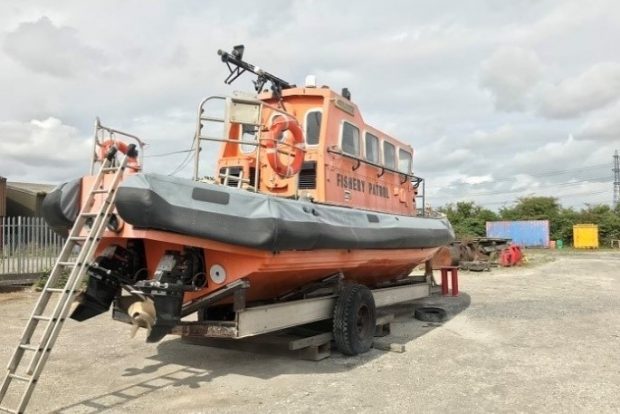The Wave Dancer, a fisheries patrol boat from Tristan da Cunha, has been transported to the UK for refurbishment as part of the UK Government’s Blue Belt Programme.

Blue Belt: working in partnership with the local community
Deep in the South Atlantic Ocean, more than 2,000 km away from their nearest neighbour, you’ll find the four islands that make up the Tristan da Cunha archipelago. The islands support rich and unique ecosystems, many of which have evolved in isolation.
The UK Government’s Blue Belt Programme is working with local experts to protect this biodiversity and support the sustainable livelihoods of the island’s residents, who rely on the fishing industry for their main source of revenue. The Blue Belt Programme is supporting the Tristan da Cunha Government in developing and implementing a strategy to protect its 750,000 km2 of oceanic territory by 2020.

Wave Dancer: a vital resource for Tristan da Cunha
The Wave Dancer is a fisheries patrol boat for Tristan da Cunha island, the largest island in the archipelago. James Glass, Tristan Director of Fisheries, explains, “the Wave Dancer is an important asset to the Fisheries Department. It is the only boat that can get to the outer islands in adverse weather conditions and stay overnight in an emergency, it supports visiting scientists carrying out fieldwork, and acts as a search and rescue boat as well”.
But the benefits of the Wave Dancer extend beyond the isolated archipelago “the Wave Dancer has rescued a number of crew from passing vessels with serious medical problems, such as a broken leg or arm, heart attack, and a broken pelvis, to mention a few. Tristan provides an important medical facility, as we’re on the shipping route between South America and Cape Town, and the Wave Dancer is part of that support”, adds James.

Blue Belt Programme: refurbishing the Wave Dancer
The Wave Dancer was transported to the UK for refurbishment as part of the UK Government’s Blue Belt Programme. The vessel was taken aboard the RRS James Clark Ross last April, arriving in Grimsby in May.
An initial assessment established the repairs needed to return the Wave Dancer to full seaworthy condition. As part of the refurbishment two engines will need to be replaced, which presents a more environmentally friendly and efficient long-term solution than reconditioning the current engines. When planning the repairs careful consideration was given to the sea conditions around Tristan da Cunha, and the proposed launch of the vessel back into its local harbour.

Looking towards 2019
The repairs to the Wave Dancer itself are just one part of the project. For a vessel that will operate around the most remote inhabited island on Earth training is vital. “We do not have many people with technical experience on the island, so training is an important function in the refitting of the boat to ensure it operates safely and independently once back on island”, explains James. As such, plans are underway to welcome Rodney Green from the Tristan da Cunha fisheries department to take an active role in the refurbishment.
The Wave Dancer may operate around the most remote inhabited island on Earth, but there’s no denying this vessel has impacted many people's lives including the residents of Tristan da Cunha, visiting scientists and even passing crew. The Blue Belt Programme Board and the Foreign & Commonwealth Office have approved the refurbishment, subject to a successful tender process, and the vessel is likely to return to the island in 2019.